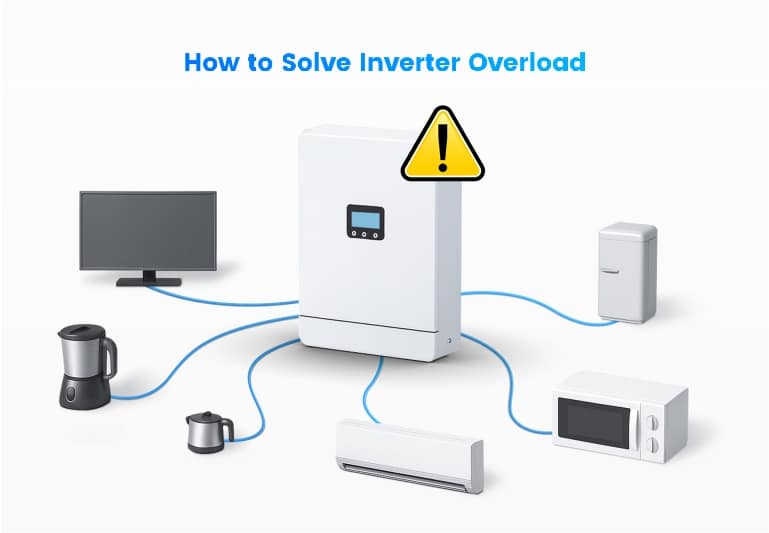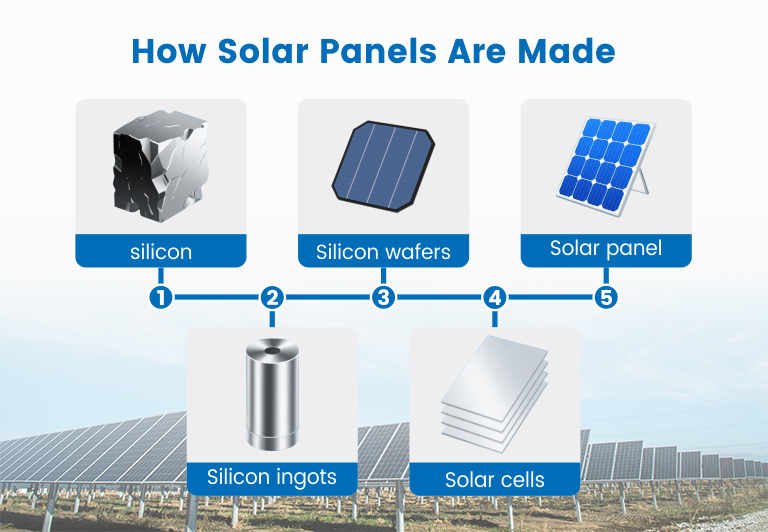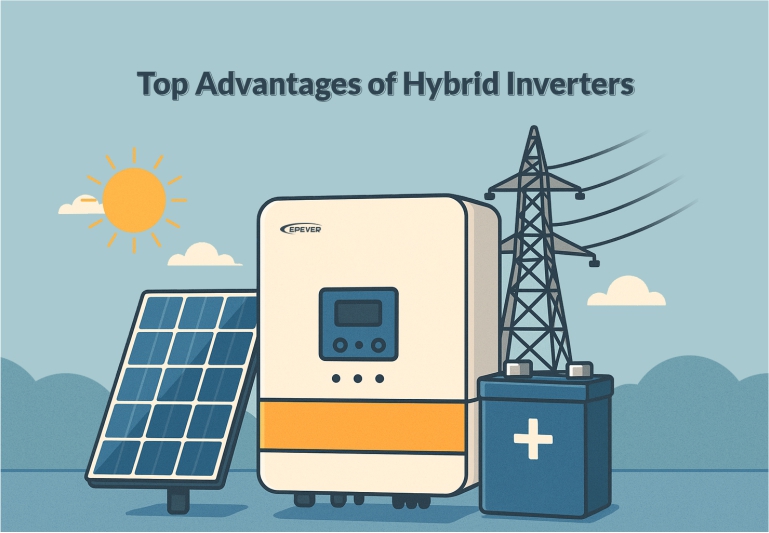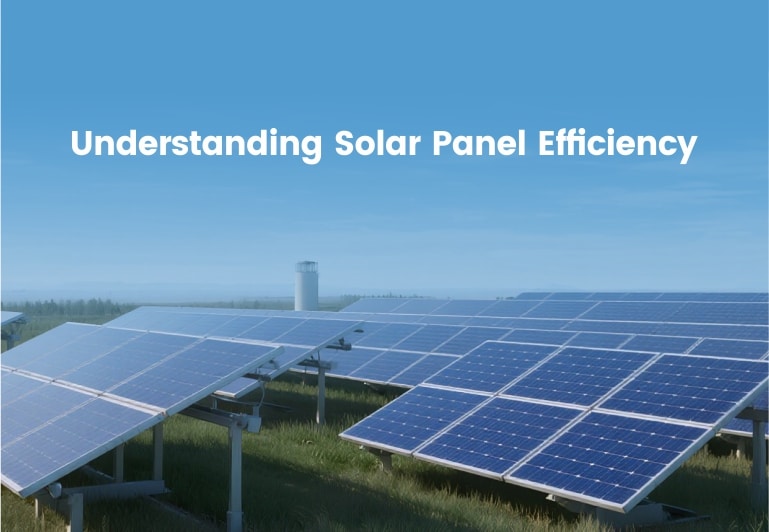How to Fix Inverter Overload
- 26 August 2025
- 20 views
- No Comments
How to Fix Inverter Overload
How to Solve Inverter Overload Issues
If your inverter suddenly shows an “Overload” warning or shuts down, here’s what you can do right away.

Quick Fix: 5 Immediate Steps to Solve Inverter Overload
- Immediately disconnect all connected appliances.
- Allow the inverter to cool down for a few minutes.
- Locate and press the reset button (or follow the reset procedure in your manual).
- Restart the inverter.
- Reconnect appliances one at a time. Make sure the overall power consumption is about 20-30 lower than the rated power consumption.
These quick actions often restore normal operation. But to really understand why overload happens — and to prevent it from coming back — it’s worth looking at the underlying concept.
In simple terms, inverter overload occurs when the power demand from your connected appliances exceeds the inverter’s rated output capacity. Put differently, the inverter is being asked to deliver more electricity than it was designed to handle.
Why Does My Inverter Show Overload When No Load Is Connected?
Even when no appliances are connected, some inverters may still display an overload warning. This can be caused by:
- Faulty Internal Sensors
If the current or voltage sensors inside the inverter are damaged or miscalibrated, they may falsely detect an overload.
- Residual Charge in the Circuit
Some electrical charge may remain in the inverter’s output circuits, especially if the system wasn’t powered down correctly. This may trick the inverter into thinking there’s a connected load.
- Firmware or Software Glitches
Bugs or outdated firmware may cause incorrect readings. A simple update or system reset might resolve the issue.
- Wiring or Grounding Issues
Improper or loose wiring can cause abnormal electrical feedback, triggering false overload alarms.
How to Fix Inverter Overload with No Load Connected
- Perform a full reset.
- Disconnect all cables and reconnect after a few minutes.
- If the issue persists, consult your inverter supplier for diagnostics or firmware updates.
- Connect a load to make sure the power flow is in progress.
- Make sure the firmware is the latest version.
What is Inverter Overload?
So you’ve dealt with an overload situation — maybe your inverter shut down, a red light came on, or some appliances just stopped working out of nowhere. You might be wondering: what exactly is inverter overload? And more importantly, why does it even happen in the first place?
It’s not just about “too many devices” — the real reason goes deeper. Understanding what overload actually means, and how it happens, can help you avoid these problems next time. In this section, we’ll break it down in simple terms, explain the types of overload, and show you why this issue deserves your attention — especially if you’re using solar or battery backup systems daily.
Definition: What Does Inverter Overload Mean?
An inverter overload occurs when the total power demand from connected appliances or systems exceeds the rated capacity of the inverter. Every inverter comes with a manufacturer-defined maximum continuous output (e.g., 3000W or 5000W). If the devices connected to the inverter draw more than this amount, the system may experience shutdowns, warnings, or damage.
Temporary Overload vs. Continuous Overload
Some overloads aren’t actually dangerous. Your inverter might handle a quick power surge — like when your fridge kicks in — without any issue. That’s what we call a temporary surge. But if the red light stays on or alarms keep beeping, that’s a sign of continuous overload and needs attention.

- Temporary Overload (Short-Term Surge)
Temporary overload refers to brief, short-duration spikes in power demand — often caused by devices like refrigerators, air conditioners, or pumps. These are inductive loads, which require a burst of high “inrush current” when they start up.
Many high-quality inverters are designed to handle this. For example: A 3000W inverter may tolerate 6000W for 5 seconds. This is called the surge capacity, which is different from its continuous power rating.
Key Point: Temporary overload is usually acceptable if it stays within the surge limits and does not occur frequently.
- Continuous Overload (Sustained Overdraw)
Continuous overload occurs when the inverter is asked to deliver more than its rated capacity for an extended period (e.g., running at 110% of capacity for several minutes or hours).
While some inverters (especially on-grid or hybrid types) support light continuous overload, doing so repeatedly or beyond their design margin will:
- Cause internal heat buildup
- Trigger protective shutdowns
- Decrease efficiency and lifespan
- Potentially damage internal components
Key Point: Continuous overload is much more harmful and should always be avoided through proper sizing and usage.
Recognizing Inverter Overload: Real-World Triggers and Warning Signs
Even if you’ve resolved the issue once, it’s worth asking: what early signs did you miss? Overload doesn’t always strike without warning. In fact, most inverters give subtle clues before triggering protection or shutting down. Recognizing these overlooked signals is the key to preventing repeat problems and protecting both your inverter and appliances long term.
Let’s go over some common overload situations, early warning signals, and even some deceptively “normal” behavior that might actually be a sign your inverter is struggling.
1. Common Scenarios Where Inverter Overload May Occur
- Turning on multiple heavy appliances at once
e.g. Running a washing machine, microwave, and water pump simultaneously can cause a temporary power spike that trips your inverter. - Using high-surge devices during peak hours
ACs and refrigerators often need 2–3x their rated wattage just to start. If you turn them on together, the inverter may go into protection mode.
2. Key Warning Signs of Inverter Overload

- Red or fault light flashing
Most inverters flash a red light to indicate system errors — often due to overcurrent or overheating. - Continuous beeping
A persistent beep is your inverter’s way of shouting: “Help! I’m under stress!” - Sudden shutdowns even with light load
This may seem like a fluke, but it usually points to either a high-surge event or internal misdetection of load. - Inverter getting unusually hot
If your inverter is heating up without running many appliances, it’s likely working harder than it should.
3. Misleading Symptoms of Inverter Overload
- The inverter runs, but power fluctuates often
- Devices randomly restart or trip
It may look like a device issue, but it could be the inverter trying (and failing) to supply enough power. - Grid disconnection alerts (in hybrid inverters)
If you notice your hybrid inverter keeps disconnecting from the grid, check if overload or unstable output is the cause.
Other Causes of Inverter Overload
Incorrect Sizing
Selecting an inverter without enough power headroom for actual load demands is one of the most fundamental design oversights. Even if your daily consumption seems low, the startup surge of appliances like refrigerators or pumps may spike above the inverter’s capacity, triggering overloads or premature wear.
Faulty Appliances
Malfunctioning devices can draw irregular or excessive current due to internal damage. For example, a degraded capacitor in a fan or power supply can cause abnormal draw, overloading the inverter. Such faults often go unnoticed without detailed electrical diagnostics.
Power Surges
If your system is grid-connected, instability in voltage—due to grid disturbances, lightning, or rapid solar fluctuations—can lead to temporary overload conditions. Even off-grid systems can experience surge events caused by generator synchronization or charging anomalies.
Internal Inverter Issues
Inverters with faulty sensors, outdated firmware, or degraded components (such as MOSFETs, capacitors, or transformers) may misinterpret normal loads as overloads. Alternatively, they may simply be incapable of managing loads that they once handled with ease—signaling aging or internal failure.
How to Prevent Inverter Overload
Accurate Load Calculation to Prevent Inverter Overload
Ensure that the total load of all appliances does not exceed the inverter’s rated capacity. For best performance and safety, keep your total load at around 70–80% of the inverter’s rated continuous power.
Avoid Simultaneous Startup of High-Power Devices
Avoid starting multiple devices that require high surge power (e.g., air conditioners, refrigerators) at the same time.
Regular Maintenance for Inverter Overload
Perform routine checks on the inverter to ensure it’s working at full capacity.
Use Appropriate Sizing
Always choose an inverter that is slightly oversized for your system’s needs to account for power surges and future expansion. In off-grid systems, where no utility power is available to share the load, the inverter must carry the full burden of all connected appliances. This makes proper sizing and surge handling capability especially critical. That’s why many off-grid inverters are designed with high surge tolerance — some supporting 2–3 times the rated power for a few seconds — to cope with startup loads like pumps or compressors.
Don’t Rely on Overload Tolerance for Long-Term Use
Even if your inverter supports short-term overload, avoid running it in this state for long periods, as it can cause damage over time.
When to Seek Professional Help
If your inverter continues to show signs of overload even after following the troubleshooting steps, it may be time to consult a professional. Below are the scenarios where expert assistance is strongly recommend.
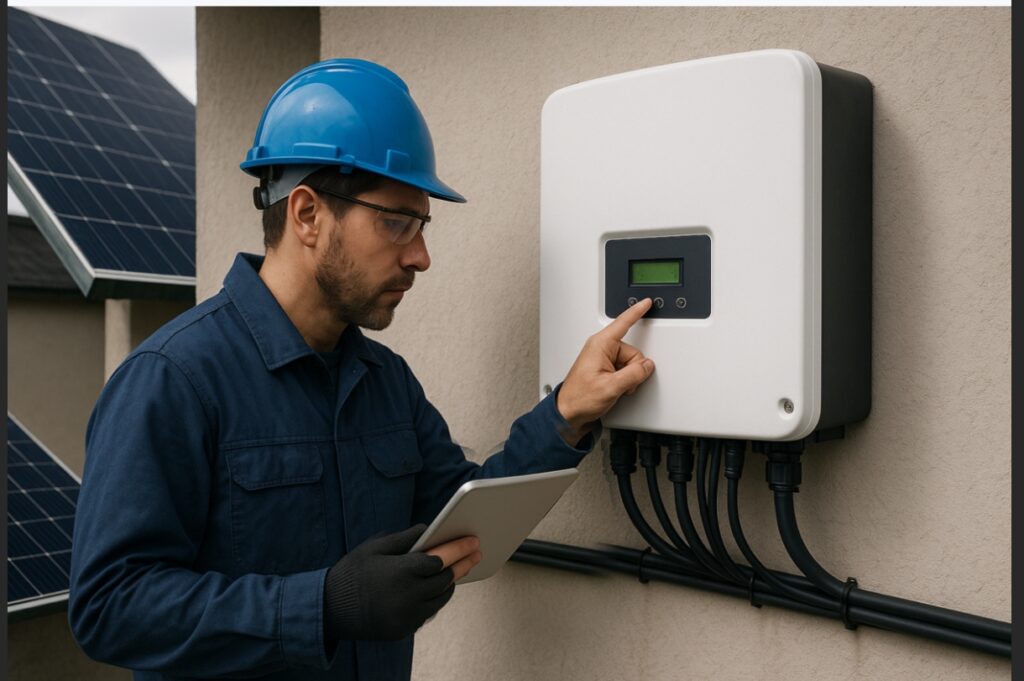
Frequent Inverter Overloads with Light Loads
The inverter trips or shuts down regularly, even when only a few low-power devices are connected.
Visible Damage Caused by Inverter Overload
Signs like burnt connectors, melted casing, or a smell of burning plastic indicate internal component failure.
Persistent Inverter Overload Issues
If the issue persists after reducing load, resetting, and inspecting all connections, deeper technical issues may be involved.
Internal Component Replacement
Problems like damaged capacitors, faulty sensors, or firmware issues require a qualified technician for safe repair.
Summary
Inverter overloads are a common issue but can be prevented with proper installation, usage, and maintenance. Always ensure your inverter’s capacity is sufficient for your load and avoid continuously operating it under overload conditions. While inverter overload often leads to shutdown or damage, EPEVER on-grid inverters offer short-term overload tolerance — such as 110% continuous output for limited duration. This capability helps prevent nuisance shutdowns during appliance startup or brief demand spikes.
EPEVER off-grid storage inverters and pure sine wave off-grid inverters are built with strong overload resilience, allowing them to handle demanding startup loads from appliances like pumps or compressors more reliably. This makes them a trusted choice for standalone solar and backup power systems where the grid cannot provide additional support.
Whether on-grid or off-grid, do not rely solely on overload tolerance as a substitute for proper system sizing and load planning. Regularly check the health of your inverter to maximize performance and lifespan.

